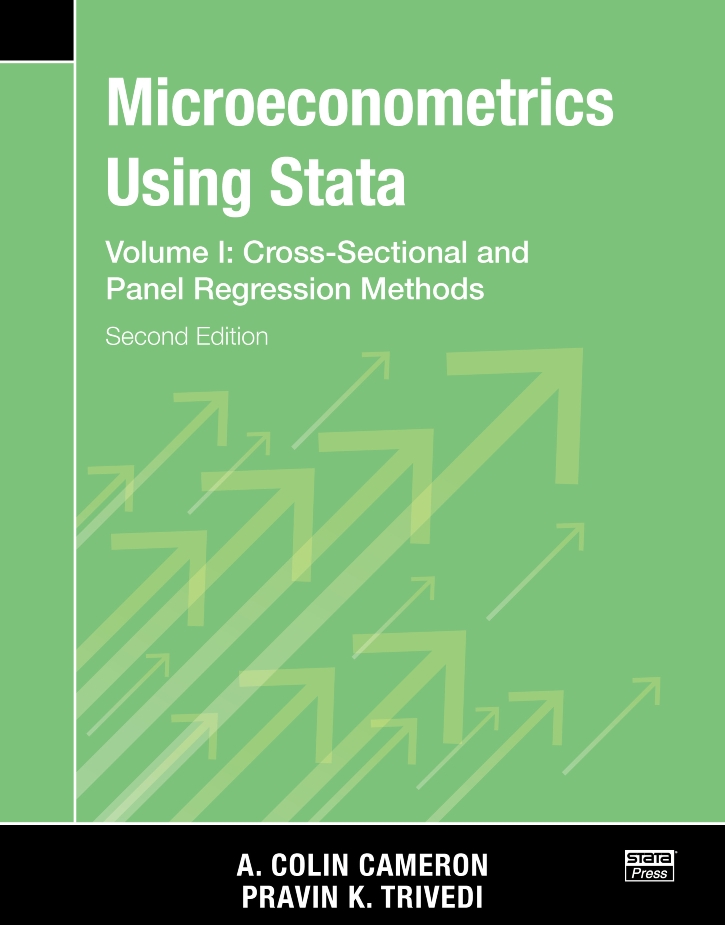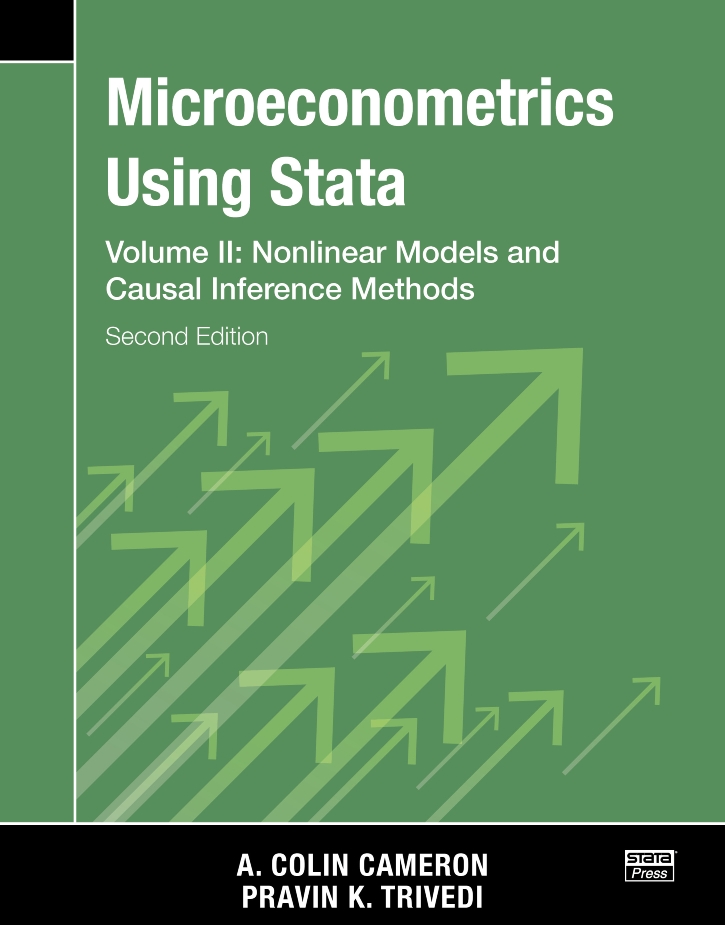MICROECONOMETRICS USING STATA
SECOND EDITION: 2022
Two volumes
1,675 pages
Stata Press


| A.
Colin Cameron and Pravin K. Trivedi MICROECONOMETRICS USING STATA SECOND EDITION: 2022 Two volumes 1,675 pages Stata Press |
 |
 |
A. Colin Cameron / University of California - Davis / http://cameron.econ.ucdavis.edu/
Pravin K. Trivedi / Indiana University - Bloomington / Emeritus